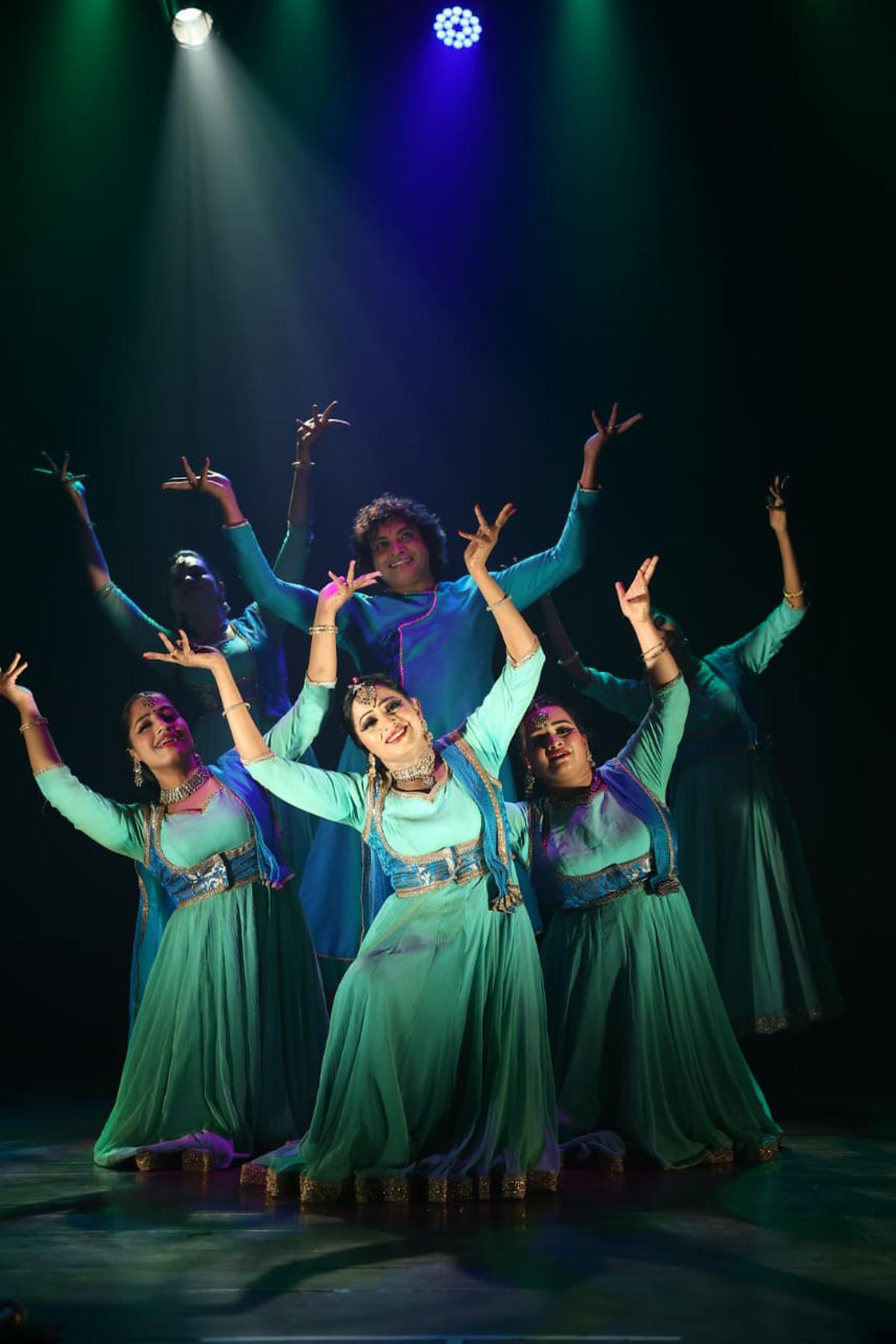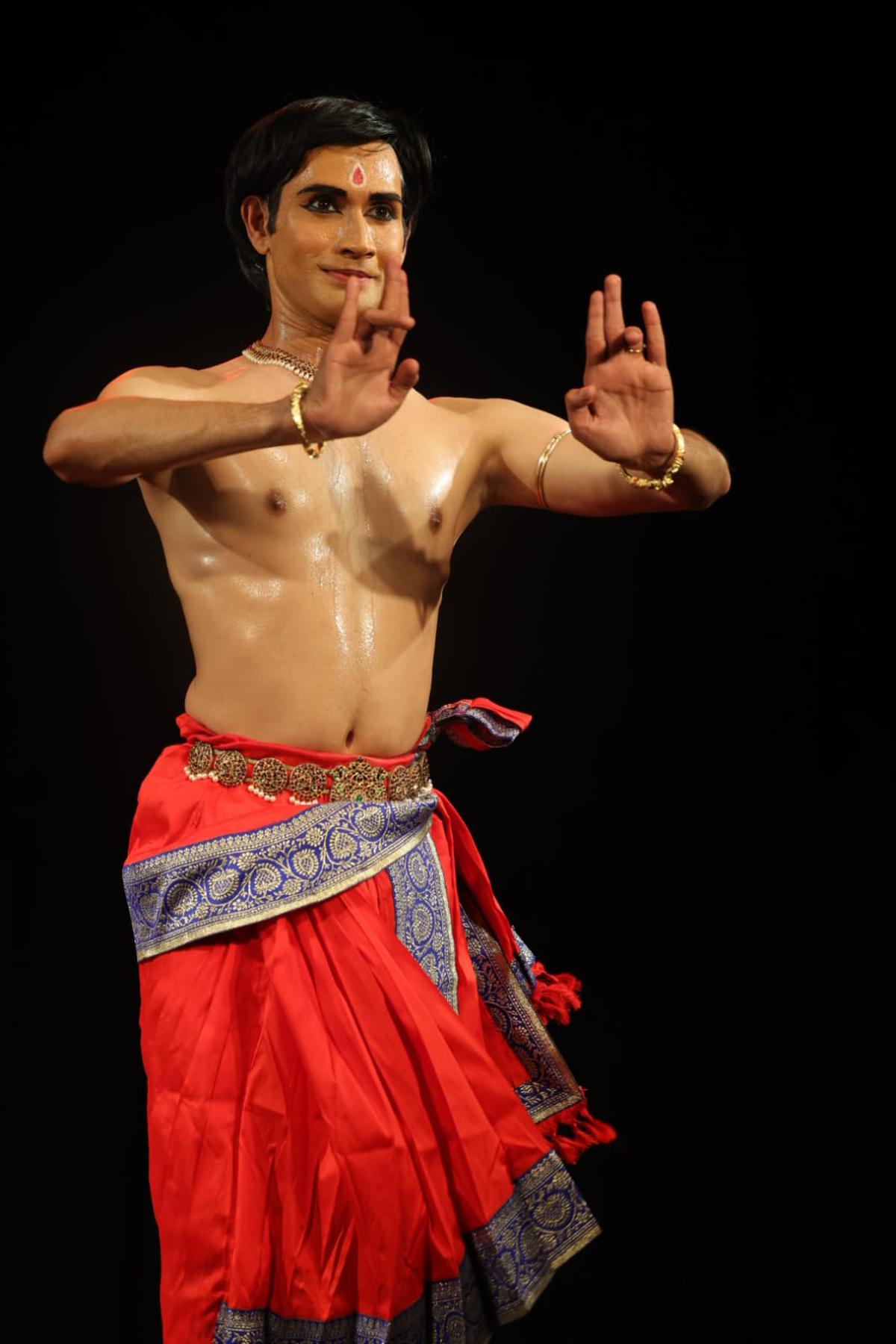Students of dancer Satyanarayana Raju performing Kavipranam. , Photo Credit: Special Arrangement
In classical dance productions, it is not rare that poetry is drowned in the glitter of the costumes, lighting, and sets. ‘Kavipranam’ was an attempt to celebrate the creations of master poets of different languages, whose works were rendered by dancers of different classical styles. The event was organized by Kimham Academy of Kuchipudi at Seva Sadan, Bengaluru. The program was also unique in that it consisted primarily of male dancers.
Chintan Patel, an alumnus of Kalakshetra and artistic director of Tejas Dance, Dallas, presented the popular Karaharapriya Padavarnam ‘Mohamaginen Inda Velayil’ by Dandayudhapani Pillai. Chintan’s acting was sincere as he portrayed the feelings of a heroine full of love and her reverence for Nataraja, who dances in the golden halls of Chidambaram. His fast tempo was notably different to the jathis in the second row of the pallavi. However, the arudis were repetitive and stale. In the third line ‘yoga mighum ambalam thannil natanam adum there’, the dancer depicts the grandeur of Nataraja’s dance. The second half of Varnam also stood out for its choreography and execution.

Hari and Chetna, and the group from Nupur Performing Arts Center in Bengaluru. , Photo Credit: Special Arrangement
full of energy
Dancer and choreographer, Avijit Das, another Bharatanatyam alumnus of Kalakshetra, has now made Kuchipudi his stronghold after training at Vempati Chinasatyam’s Kuchipudi Art Academy. His high energy, strong footwork and technique were evident in the pure dance segments of Annamacharya Namavali, which he performed with his disciples Shweta Prasanna and Madhulita. He supported him well in the cults of the Vamana avatar and in the humiliation of Draupadi at Kurukshetra. Earlier, Avijith performed ‘Abhinaya Vibhava Pranam Vidhi Ithi’ from the Natyarambham section of Natyashastra with lines translated into Telugu by Venkatanarayana Murthy. The dancer portrayed ‘Saushtavam’, the ideal posture and stance, eye movements and karanas as an integral part of the dance. The music for the piece was composed by Rajkumar Bharti.

Dancer and Choreographer, Avijit Das. , Photo Credit: Special Arrangement
Popular Kathak duo Hari and Chetna made an impact with the dramatic opening of the Nupur Performing Arts Center in Bengaluru. The piece was titled ‘Jeevo Jeevasya Jeevanam’ which contained Kannada verses from the work of KS Narasimha Swamy.
The opening line of the poem spoke of the darkness that marked the beginning of the universe. With the line ‘nanne kavithe’ the poet says, ‘howsoever others may be attached, my poetry is mine only’. The mystery in these abstract themes was presented with subtlety and restraint. The wistfulness and grace of the Kathak movements combined with the exhilarating music composed by Raghunandan Ramakrishna elevates the mood in the poem. Pure dance sequences were dominated by the third line, which said, ‘Don’t stand still, step into the light. Move from silence to speech.’ Nritta never prevailed and it retained the pride of place in poetry. Diya, Sirisha, Varuni and Nidhika join Hari and Chetna in the dance.
Veteran Bharatanatyam dancer Satyanarayana Raju’s students presented Ramayana ragamalika ‘Bhavayami Raghuramam’ by Swathi Tirunal. The choreography of the swaras and jathis was distinctive for its variety in tempo and rhythm. However, the lines were presented with only foot acting and the possibilities for the communicators were never explored, as the entire story of the Ramayana is contained in the poem.
This event was once again a testimony to the fact that the vast Indian linguistic wealth could be effectively adapted to classical music and dance.
The reviewers are independent journalists.